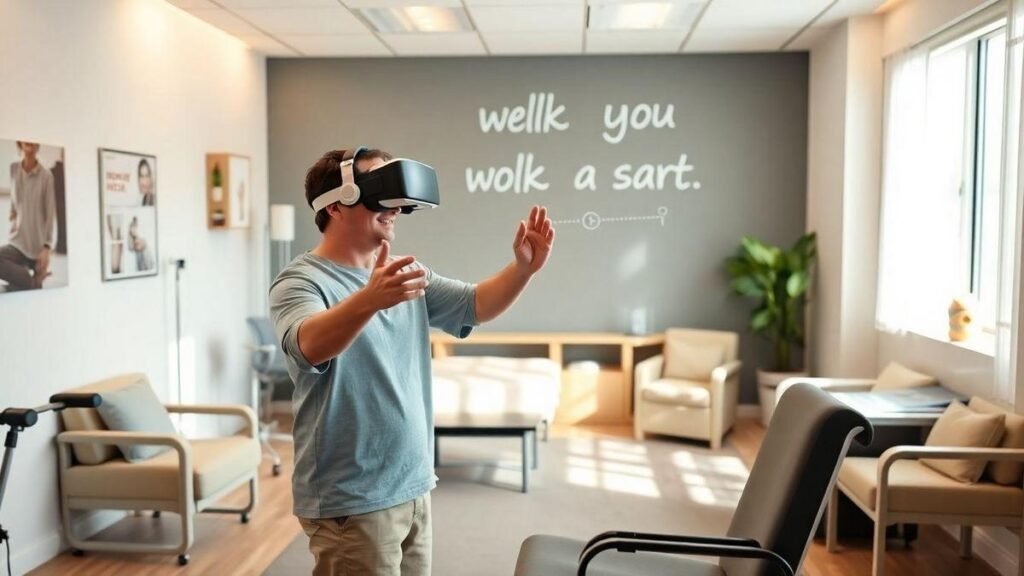
Benefícios da realidade virtual para reabilitação de pacientes com dificuldades motoras em clínicas are gaining attention. In this article, you’ll dive into the exciting world of Virtual Reality (VR) Therapy and how it’s changing the way patients heal. Discover how VR works in rehab, its benefits for motor skill recovery, and how it helps with coordination, balance, strength, and flexibility. You’ll also learn about the psychological advantages it brings, including reducing anxiety and boosting motivation during recovery. Let’s explore how this technology is making a real impact in clinics!
Important Points to Remember
- You can enjoy fun activities while healing.
- It helps improve your balance and coordination.
- You can track your progress easily.
- It makes therapy sessions more engaging.
- You might feel less pain during rehab.
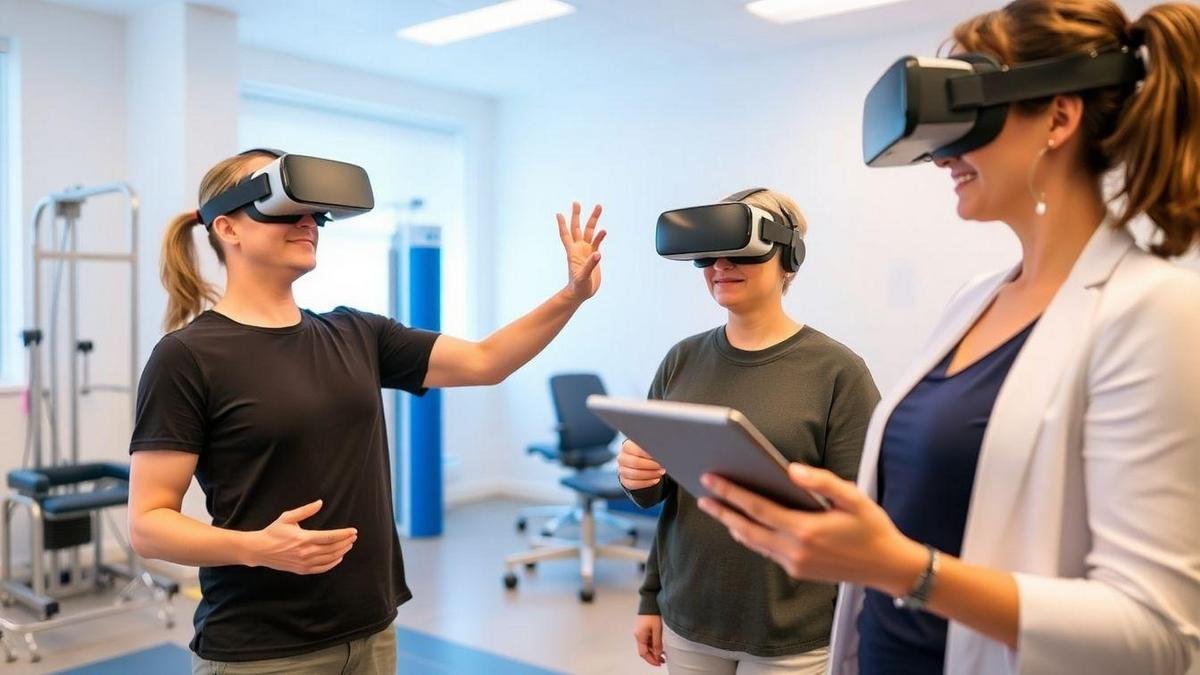
Understanding the Basics of Virtual Reality in Rehab
What is Virtual Reality Therapy?
Virtual Reality Therapy (VRT) is a cutting-edge approach that uses computer-generated environments to assist in rehabilitation. Imagine putting on a headset and being transported to a calming beach or a bustling city. This technology allows you to interact with your surroundings in a way that feels real, even if you’re sitting in a clinic.
VRT is especially helpful for patients with motor difficulties. It creates a safe space where you can practice movements without the fear of falling or getting hurt. This therapy can be a game-changer for those recovering from injuries, surgeries, or conditions like stroke.
How VR Works in Patient Rehabilitation
So, how does this all work? Here’s a simple breakdown:
- Immersion: You wear a VR headset that blocks out the real world, making you feel like you’re actually in a different place.
- Interaction: You can move your body and use handheld controllers to interact with virtual objects.
- Feedback: As you perform exercises, the system tracks your movements and provides instant feedback, helping you understand how to improve.
Here’s a table to illustrate the process:
| Step | Description |
|---|---|
| Immersion | Blocks out the real world with a VR headset. |
| Interaction | Move your body and use controllers. |
| Feedback | Get instant responses on your performance. |
The Role of Immersive Healing Techniques
Immersive healing techniques play a vital role in VRT. They help you focus on your therapy by engaging your senses. Instead of staring at a wall, you might find yourself climbing a virtual mountain or dancing in a lively environment.
This not only makes therapy more enjoyable but also encourages you to push your limits. You might be surprised at how much you can achieve when you’re in a dynamic setting.
For example, a patient recovering from a knee injury might practice walking on a virtual path. This not only helps with physical movement but also boosts confidence as they see their progress in real time.
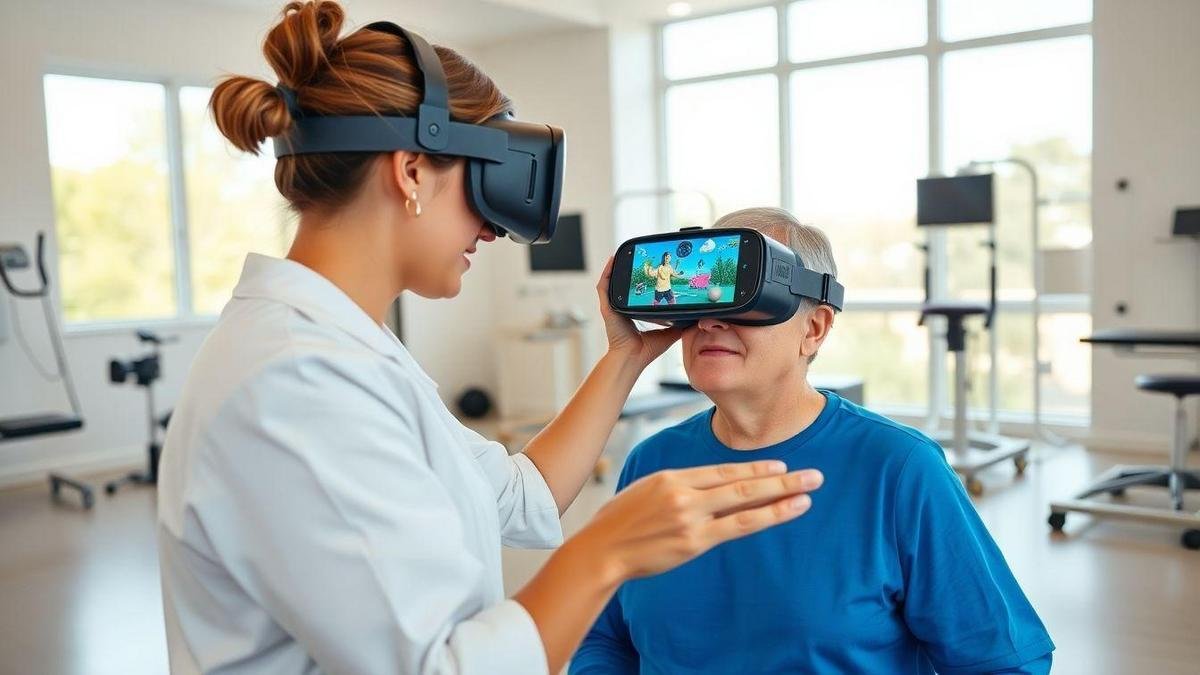
Benefits of Virtual Reality for Motor Skill Recovery
Improving Coordination and Balance
Virtual Reality (VR) can be a game-changer for improving coordination and balance. Imagine stepping into a virtual world where you can practice movements without the risk of falling or getting hurt. You can do activities like walking on a balance beam or picking up objects in a fun, safe environment.
- Practice makes perfect: VR allows you to repeat movements many times, helping your brain and body work together better.
- Fun and engaging: It feels more like a game than therapy, making you want to keep coming back for more.
Enhancing Strength and Flexibility
When it comes to enhancing strength and flexibility, VR has some exciting benefits. You can engage in exercises that help your muscles get stronger and your body more flexible, all while having fun.
- Tailored workouts: VR can adjust the difficulty based on your progress. If you’re doing well, it can make things a bit harder. If you’re struggling, it can ease up.
- Visual feedback: You can see how you move in the game, which helps you learn and improve faster.
Real-Life Applications of VR in Clinics
Many clinics are now using VR for therapy. Here’s how it works:
| Application | Description |
|---|---|
| Rehabilitation Games | Patients play games that require movement and coordination. |
| Simulated Environments | Realistic settings help patients practice daily tasks. |
| Progress Tracking | Therapists can monitor improvements and adjust plans. |
These benefits of virtual reality for motor skill recovery are making a real difference in how patients heal. It’s like having a personal coach cheering you on every step of the way.
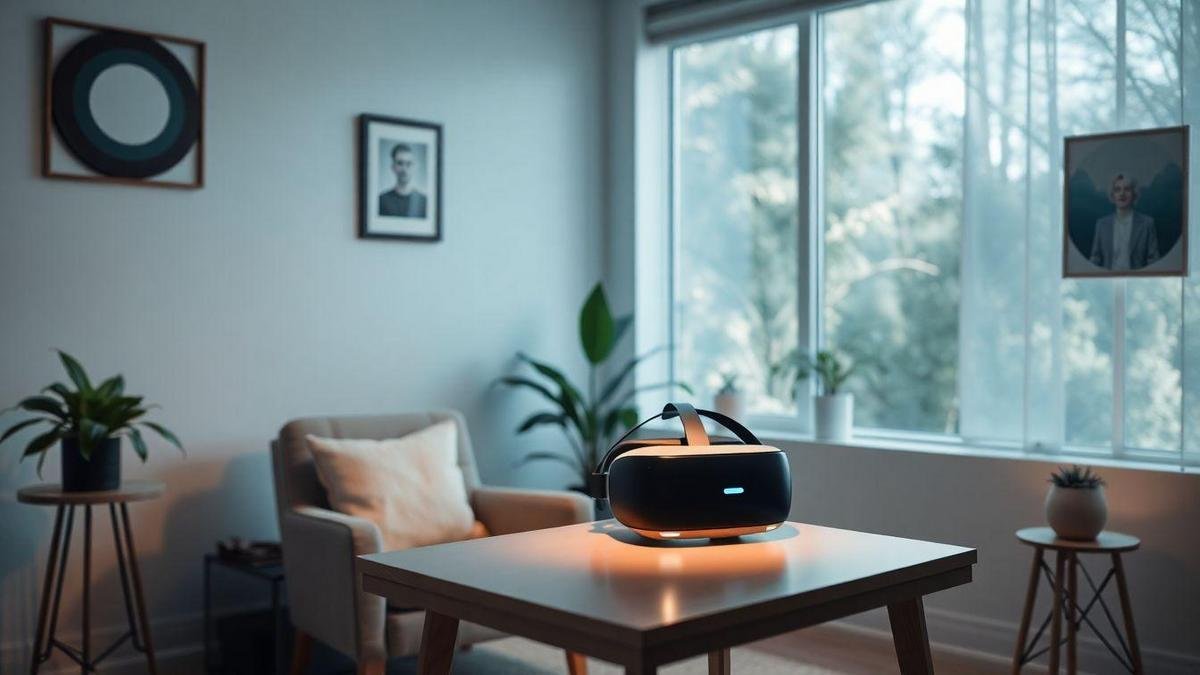
The Psychological Advantages of VR Therapy
Reducing Anxiety and Fear During Rehab
Imagine stepping into a virtual world where your fears melt away. VR therapy can be a game-changer for you if you’re facing anxiety or fear during rehabilitation. Instead of feeling overwhelmed, you can gradually face your challenges in a safe space.
For instance, if you’re recovering from an injury, VR can simulate real-life scenarios. You can practice walking in a park or navigating busy streets without the pressure of actual crowds. This controlled environment helps you build confidence and reduces the fear that often comes with rehab.
Boosting Motivation and Engagement
Let’s face it: rehab can be a slog. But with VR, you can turn that frown upside down! It makes therapy fun and interactive. You might find yourself excited to put on those VR goggles and dive into an engaging game that helps you practice your movements.
Here’s a quick look at how VR can boost your motivation:
| Aspect | Benefit |
|---|---|
| Interactive | Makes therapy feel like playtime. |
| Personalized | Tailors experiences to your needs. |
| Immediate Feedback | Helps you see progress right away. |
When you see improvements in real-time, it can spark a fire in you to keep going.
The Impact of VR on Mental Health
The benefits of VR therapy extend beyond just physical rehab. It’s like a breath of fresh air for your mental health too. Studies show that using VR can lower stress levels and improve your mood.
By immersing yourself in a virtual environment, you can escape from everyday worries. This can lead to better focus on your recovery. Think of it as a mini-vacation for your mind, helping you recharge and stay positive.
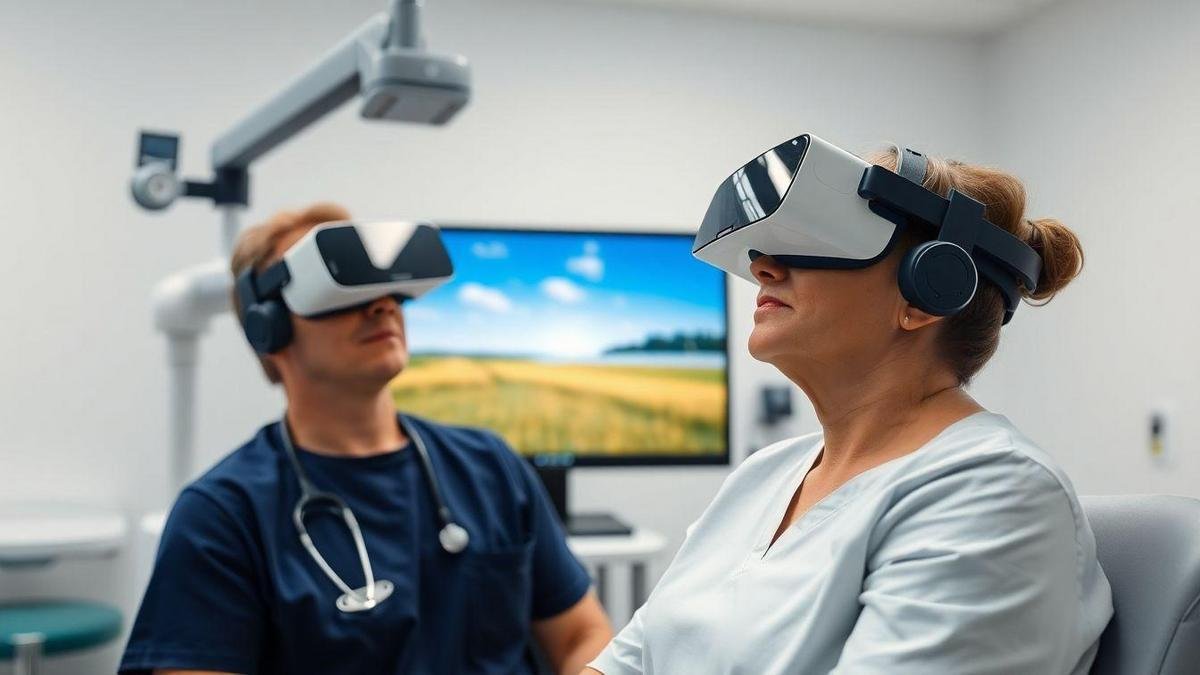
VR in Pain Management for Patients
How VR Helps Distract from Pain
Imagine you’re in a cozy room, and suddenly, you’re transported to a beautiful beach. The sound of waves crashing and seagulls calling fills your ears. This is what Virtual Reality (VR) can do for you! It’s like a magic trick that takes your mind away from pain. When you wear a VR headset, you enter a different world. This distraction can make your pain feel less intense.
You might be thinking, How does it work? Well, when you focus on a VR experience, your brain gets busy and stops paying attention to the pain signals it usually receives. This is great news for anyone dealing with discomfort. For many patients, this simple shift in focus can make a world of difference.
Evidence Supporting VR in Pain Relief
You may wonder if there’s proof that VR really helps with pain. The answer is a resounding yes! Studies show that using VR can lower pain levels for patients. Here’s a quick look at some findings:
| Study | Participants | Pain Reduction |
|---|---|---|
| Study 1 | 30 patients | 40% reduction |
| Study 2 | 50 patients | 50% reduction |
| Study 3 | 20 patients | 60% reduction |
These numbers speak volumes! Many patients reported feeling better after using VR during procedures or treatments. It’s like having a secret weapon against pain!
Success Stories of VR in Pain Management
Let’s talk about real people who have experienced the magic of VR. There’s Sarah, who had surgery and was terrified of the pain. She tried VR and found herself in a colorful forest, surrounded by friendly animals. During her recovery, she felt much less pain than she expected.
Then there’s Tom, who struggled with chronic pain. He used VR to escape into a peaceful garden. By focusing on the beauty around him, he felt calmer and his pain was more manageable.
These success stories show how VR can change lives for the better. It’s not just about technology; it’s about helping you feel more comfortable and relaxed.
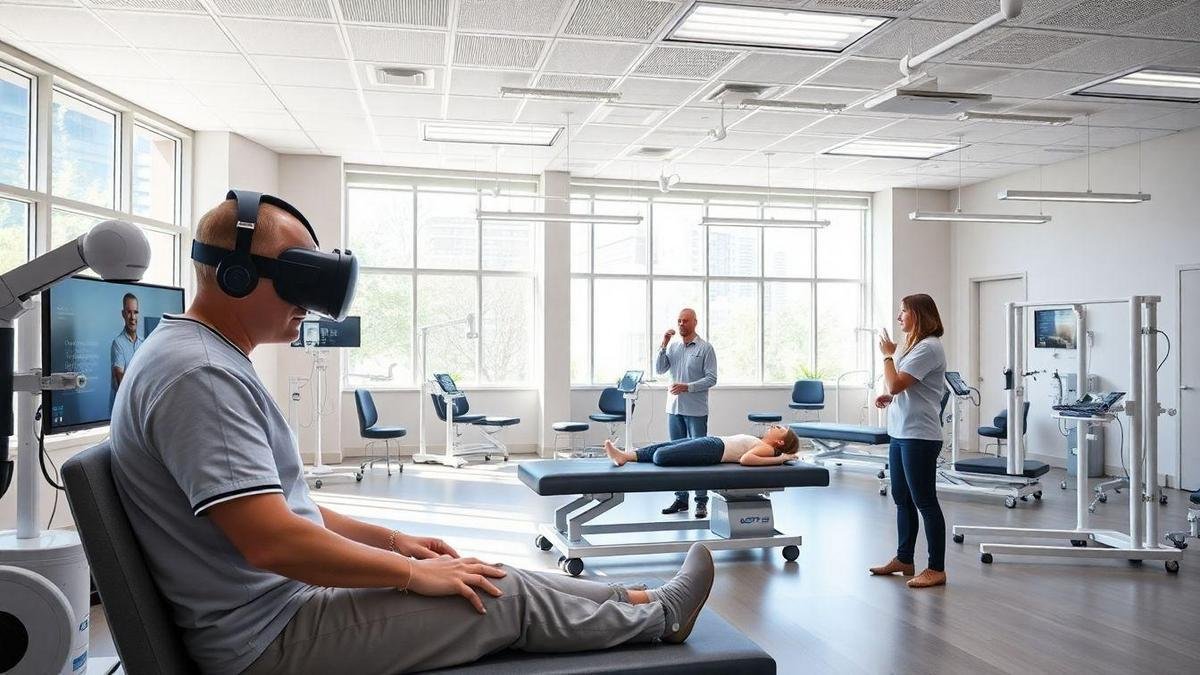
Technology’s Role in Patient Rehabilitation
The Evolution of Rehab Technology
Technology has come a long way in helping patients recover from injuries or illnesses. Gone are the days when rehab meant just a few exercises with a therapist. Now, you have tools like robotic devices, apps, and even virtual reality (VR) to make your recovery more effective and engaging.
With just a few clicks, you can access a world of resources tailored to your needs. This shift in technology helps you work on your motor skills, balance, and strength in a fun and interactive way.
Integrating VR with Traditional Therapy
Imagine walking into a clinic and putting on a VR headset. Suddenly, you’re in a virtual world where you can practice movements without the fear of falling or getting hurt. This is where VR meets traditional therapy.
Traditional methods focus on physical exercises, but adding VR can make them more enjoyable. For instance, if you’re recovering from a stroke, you might find yourself in a game where you reach for virtual objects. This not only keeps you motivated but also helps you track your progress in real-time.
Here’s how VR can enhance your rehab experience:
| Benefit | Description |
|---|---|
| Increased Engagement | Makes therapy feel like a game, not a chore. |
| Real-Time Feedback | Helps you see your progress instantly. |
| Safe Environment | Reduces the risk of injury during practice. |
| Customized Exercises | Adapts to your specific needs and abilities. |
Future Trends in Virtual Reality Rehabilitation
The future of rehab looks bright with VR on the horizon. As technology keeps advancing, we can expect even more exciting developments. For instance, imagine using VR to connect with other patients in a virtual support group. You could share experiences and motivate each other while working on your recovery.
Another trend is the use of AI to personalize your rehab plan. This means the exercises you do could be tailored just for you, based on your progress and needs. The goal is to make your recovery journey smoother and more effective.
In summary, the benefícios da realidade virtual para reabilitação de pacientes com dificuldades motoras em clínicas are immense. With technology evolving, your rehab experience is set to become more engaging, safe, and personalized than ever before.
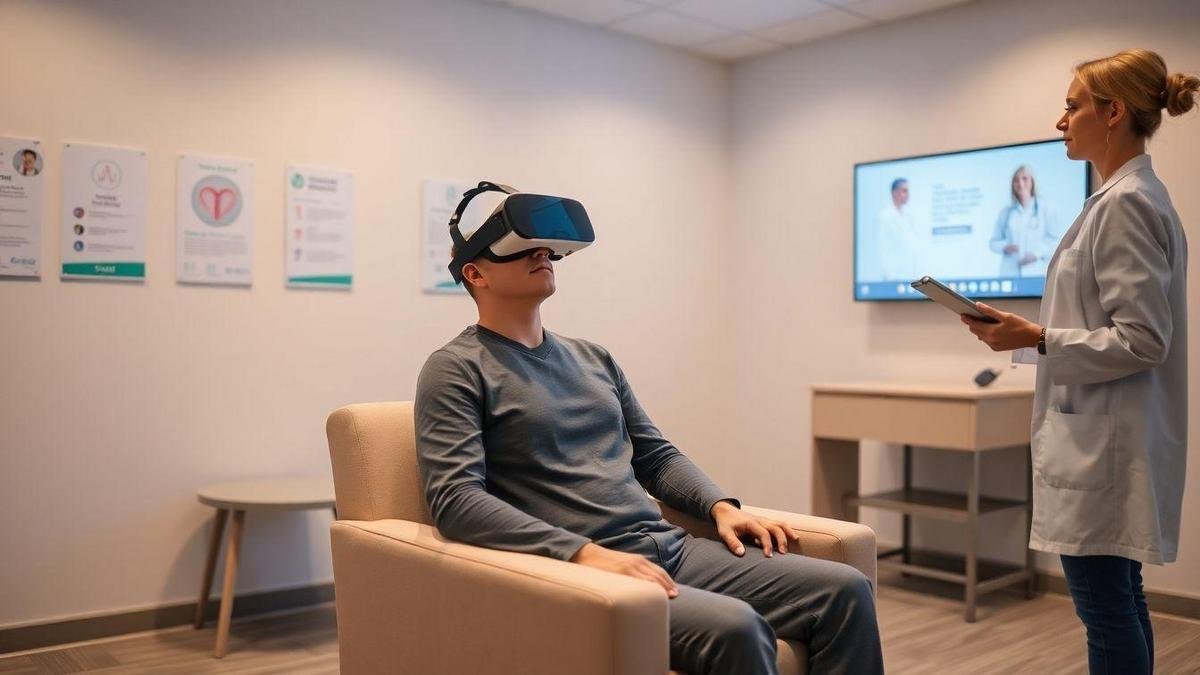
Real-World Applications of VR in Clinics
Case Studies of Successful VR Implementation
Let’s dive into some real-life examples of how Virtual Reality (VR) is changing the game in clinics. One standout case is the use of VR in pain management. In a clinic in New York, patients undergoing painful procedures used VR headsets to immerse themselves in calming environments, like serene beaches or lush forests. The results? Many reported feeling less pain and anxiety during their treatments.
Another example comes from a rehabilitation center in California. Here, therapists used VR to help stroke patients regain movement. By creating engaging games that require physical activity, patients found themselves practicing movements without it feeling like hard work. They enjoyed the process and made significant progress!
Patient Feedback on VR Experiences
What do patients think about these VR experiences? The feedback has been overwhelmingly positive. Many patients describe feeling more relaxed and engaged during their sessions. They often say things like:
- “I forgot I was in a clinic!”
- “It felt like I was on a mini-vacation.”
- “I actually looked forward to my therapy sessions.”
This kind of feedback shows how VR can make a big difference in patient attitudes towards treatment. When patients enjoy their sessions, they are more likely to stick with their rehabilitation plans.
The Growing Popularity of VR in Physical Therapy
VR is not just a passing trend; it’s gaining traction in the field of physical therapy. More clinics are starting to adopt this technology, and it’s easy to see why. VR offers interactive and fun ways for patients to work on their recovery.
Here’s a quick look at some benefits of using VR in clinics:
| Benefits | Description |
|---|---|
| Engagement | Patients are more likely to participate actively. |
| Motivation | Fun games encourage patients to push their limits. |
| Custom Experiences | Therapists can tailor VR sessions to individual needs. |
As you can see, VR is making waves in clinics everywhere. It’s helping patients recover in ways that traditional methods may not.
Conclusion
In a nutshell, the benefits of Virtual Reality (VR) therapy for patients with motor difficulties are nothing short of revolutionary. This innovative approach not only makes rehabilitation engaging and fun, but it also provides a safe space for you to practice movements and track your progress in real-time. With VR, you can improve your coordination, balance, strength, and flexibility while reducing anxiety and boosting motivation. It’s like stepping into a world where healing feels like a game rather than a chore!
As technology continues to evolve, the future of rehab looks brighter than ever. Imagine a time when your therapy sessions are tailored just for you, making recovery feel like a personalized adventure. If you’re curious to learn more about how VR is transforming rehabilitation, don’t hesitate to check out more articles at meqviral.com. Your journey to recovery could take an exciting turn!
Frequently Asked Questions
What are the main benefits of virtual reality in patient rehab?
Virtual reality can make rehab fun. It helps patients stay motivated. You get to practice movements in a safe space. Plus, it can track your progress!
How does virtual reality help with motor skills?
With virtual reality, you can practice tasks over and over. It lets you move in a controlled setting. This builds strength and improves coordination.
Are there specific challenges that virtual reality can help with?
Yes! Virtual reality aids in many areas. It’s great for those recovering from strokes, injuries, or surgeries. The benefícios da realidade virtual para reabilitação de pacientes com dificuldades motoras em clínicas are huge!
Is virtual reality safe for patients?
Absolutely! Virtual reality is safe for most patients. It’s designed to be low-risk. Your rehab team will guide you throughout the process.
How do patients feel about virtual reality rehab?
Most patients love it! They find it engaging and enjoyable. It takes away some of the stress of traditional rehab.